QuestionHi Diane, A few months ago I bought 2 female leopard geckos, both about 11 months old at the time. Both in great condition and eating well. They are housed in a 15 gallon tank together with an UTH and heat lamp. Recently, about starting in October, one of them, an Albino, quit eating and has lost a lot of weight. I think it may be due to either the weather getting colder or maybe the other female eats all the food. I am not sure. What should I do. Do you suggest I force feed her.
Irene
AnswerHi Irene,
Two adults in a 15 gallon tank is most likely the problem. I don't even recommend a 15 gallon for one leo. For the two, using a 20 gallon long is an acceptable sized tank. It is the size I recommend for one but, as I said, is acceptable for two. With such a small space now, they cannot establish their own area which the one may be alpha and isn't allowing the other to get warm, eat, etc. It is impossible to provide the temperature zones, hides, etc they need. I am going to include a basic care sheet I wrote to help people out. Be sure to make any needed changes.
You don't mention any over head heat from a "basking" bulb or other heat source. They really need to have both a bottom heat and overhead heat on 1/3 of their tank.
You need to separate them and see if that helps. Give each their own setup with proper heat, both under tank and overhead. Of course all the proper hides, etc. If the albino doesn't start eating once a proper environment is made and she is separate from the other one, then a vet visit is needed to find out if there is something health wise going on such as internal parasites. Also, some geckos may form eggs even though they are not with a male.(are you sure your other one isn't a male?) Usually you will be able to see an egg or two forming on their underside. Eggs appear as a white egg shaped blob inside their stomachs.
Again, Separate them with their own proper setup..heat, hides, etc and go from there.
BASIC CARE FOR A LEOPARD GECKO
Leopards are pretty easy to care for but they do need
special care. Here are some of the basic needs of your gecko.
HOUSING: The need to have at least a 20 gallon long tank for one Leo. This needs to have a secure fitting screen top...they can be quite the escape artists!!! They need to have a humid hide box.You can make this with something as simple as a small plastic dish with a hole cut in one side and a small mesh bag filled with some Sphagnum moss coconut bark or Peat moss that you mist.
I made mine out of the small plastic folgers coffee containers...I cut an opening in the lid..and put the moss in..they LOVE it. I use the terrarium moss in mine.
I use that on the warm side of the tank. Be sure to provide a cool hide box on the other end. I also provide a mid temperature hide...which is in the middle of the tank.I use the critter caves which you can purchase. NOT the ones that have heat in them!!!!
Provide secure climbing areas for your gecko. Fake plants, rocks and branches are all fine to use. be sure there are no wires or sharp ends to any fake plants you use.
*****SUBSTRATE:(that's the stuff on the floor of your tank) Newspaper, lizard carpet or paper towels work great and are easy to clean and are much safer than any loose substrate. Sand or other loose substrate is not recommended as that they can be deadly to the leo when it is ingested(eaten, even by accident while eating their insects)...A very graphic site of an impacted leo surg can be seen at http://homepage.mac.com/exoticdvm/reptile/PhotoAlbum181.html it is very graphic!!! ******What I have found that works great for safety and heat distribution is using about 1/4 inch of children's play sand(since the tiles fit tight together, there is no sand danger) on the bottom of the tank and on top that you place ceramic or slate floor tile. What is nice is that the 12 x 12 squares fit perfect in a 20 gallon tank with no spaces between the tiles. The sand and the tile distribute the heat wonderfully. Using the under tank heater as described is what distributes the heat. Also, overhead heat will help in heating the tiles...I've been using this set up for several years and the leos love it. Using a tile that isn't smooth is recommended. **********
TEMPERATURES: They need a warm area ( on the floor) of 88-92 degrees and a
cooler area in the upper 70s, low 80s. At night their temperature can drop to the low to mid 70's.
Never use a hot rock for a leopard gecko...or any reptile.
They can severely burn any reptile. You can use a heating
pad under the tank,under tank heater for the warm area. You can use a regular household light bulb in a dome fixture with a ceramic socket in it to keep the warm area at the 88-92 degree area if needed there, otherwise, placing the light bulb about midway in the tank will give the needed temperatures throughout the tank. You may have to play with the wattage of the bulb but generally 40-60 watts is sufficient.At night, no white light. If room temperatures stay above 70 degrees, no extra night heat is needed. The under tank heater or heating pad should cover about 1/3 of the tank....be sure to raise the tank up about 1/4-1/2 inch off the stand when using an under tank heat source to prevent heat build up which can cause the glass to break and hot spots in the glass. Be sure to have a good layer of newspaper, carpeting or, even a thin flat rock(such as tile) on top the area that the under tank heat source is placed...if you use a thin rock or tile, it helps to distribute the heat very well.
You can use the special nighttime lights that are designed for reptiles. I like using a ceramic heat emitter on a thermostat for nighttime heat.
DO NOT use black lights or party lights as they can cause eye damage!!!!
The wattage you use will vary based on room temperature and size of tank.
LIGHTING: Leopard geckos do not need UVB lighting but it does not hurt them to give them uvb. They should have some type of light during the day, be it a uvb tube, regular florescent light, reptile day light or regular household light bulb. NO white lights at night!!!
FEEDING: Geckos should not be fed crickets or other insects that are bigger than the space between their eyes. Generally, hatchlings can be fed more than once a day,juvys can be fed twice a day, adults are fed once daily or every other day, in the early evening. Crickets and other food items such as silk worms, super, and an occasional treat of a wax worm, need to be dusted with a calcium supplement two times a week and also they should have a small dish of calcium in their tank. I use the lid of a milk jug for the little dish of calcium in their tank. For dusting the insects, Use a calcium with no added phosphorus. Insects must be gut loaded(fed) for at least 48 hours prior to feeding your gecko. Remove any uneaten crix or superworms after 15-20 minutes..... Place a piece of cut potato in the tank so that if you have missed any uneaten insects, they will eat the potato instead of nibbling on your gecko!!!
*************You have to be sure to feed your crickets and insects the right foods before feeding them to your gecko. If your crickets/insects are not healthy and well fed, your gecko will not get the nutrition he needs. You can gut load your crickets and insects greens, veggies, cereals or specially designed commercial foods for crickets or the insects you are feeding. ************
Be sure to have a small dish of clean water for your gecko at all times!!
You can offer them some baby food or fruits on occasion ...
Mine will even eat a small piece of watermelon now and then.WATER: always provide a dish of drinking water. If you choose to mist your gecko to drink, its best to not get the tank too wet as that they do not do well with higher humidity. Sometimes its better to take your leo out of their tank to mist them to get them to drink!!!
HANDLING: Some geckos enjoy being held...others prefer not to be handled at all. Be sure to be very gentle when holding your leo and NEVER grab them by the tail! Their tails are extremely fragile and will break.
I do suggest finding a vet that can treat reptiles BEFORE you actually need one!!! To find a vet that is able to care for reptiles:
http://www.herpvetconnection.com
http://www.arav.org/ECOMARAV/timssnet/amm/tnt_mdsearch.cfm
http://www.anapsid.org/vets/
For more information on leopard geckos:
http://www.drgecko.com
If you have any questions or don't understand something, please let me know.

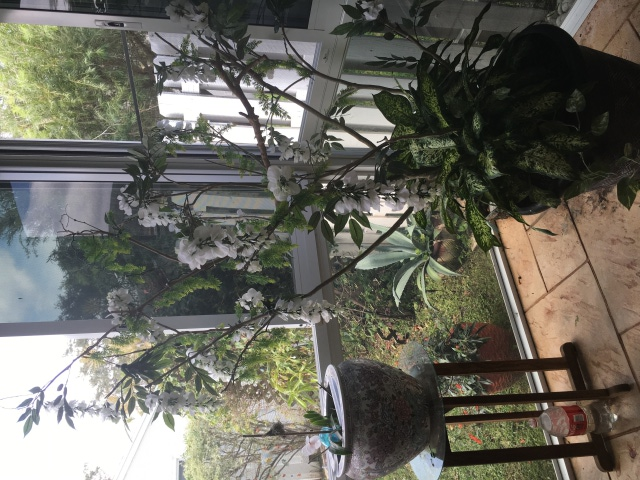 My 1 year old Chamaleon
QuestionRambo
His habitat
QUESTION: My on
My 1 year old Chamaleon
QuestionRambo
His habitat
QUESTION: My on
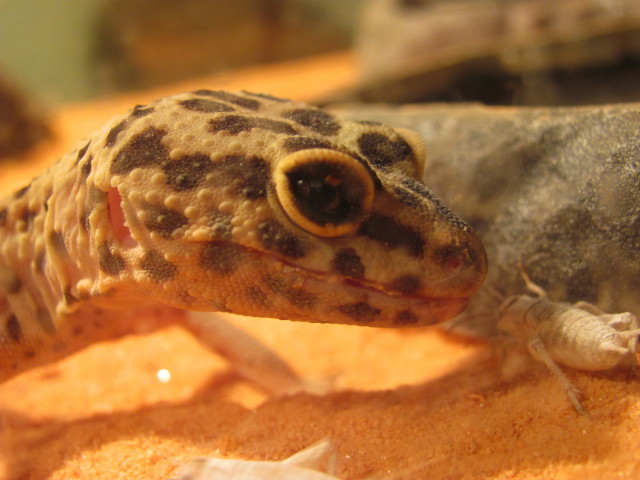 eye problems
Questionhis eye
QUESTION: my 2 year old male leo
eye problems
Questionhis eye
QUESTION: my 2 year old male leo
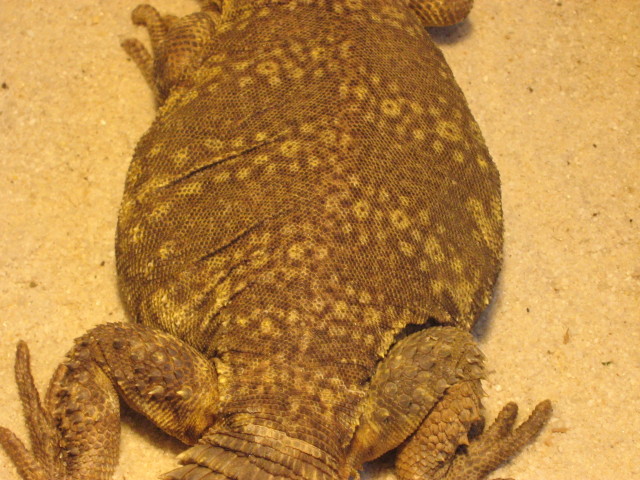 Gravid or fat?
Question
Gravid or just fat?
Hi again..i forgot to ment
Gravid or fat?
Question
Gravid or just fat?
Hi again..i forgot to ment
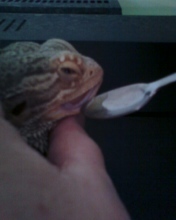 Bearded Dragon Eyes
QuestionBearded Dragon Eyes
QUESTION: Hi Tracie,
Bearded Dragon Eyes
QuestionBearded Dragon Eyes
QUESTION: Hi Tracie,
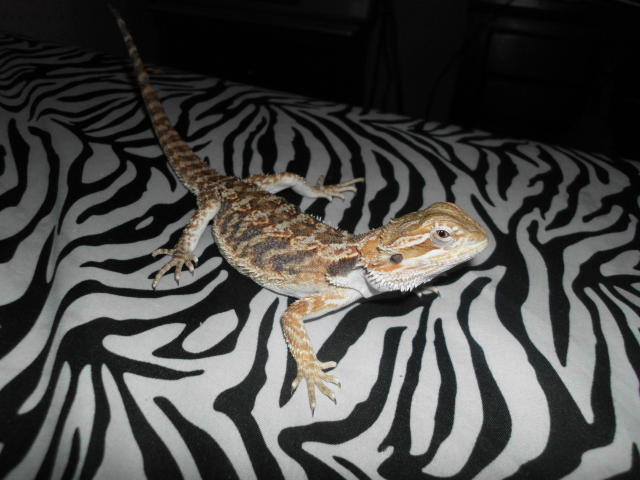 Bearded Dragon Eyes Shut
QuestionQUESTION: Hello i have a 7 mon old bearded drag
Bearded Dragon Eyes Shut
QuestionQUESTION: Hello i have a 7 mon old bearded drag